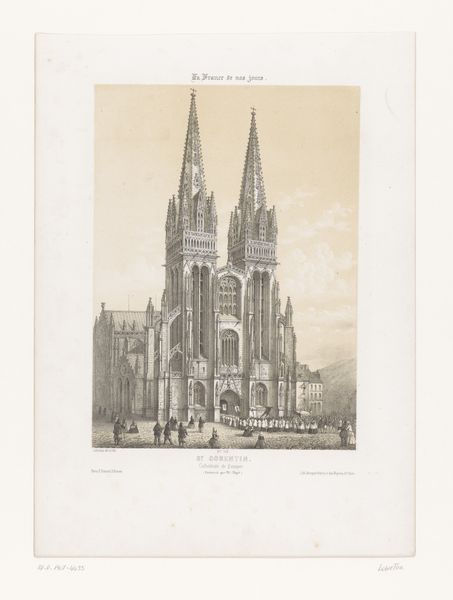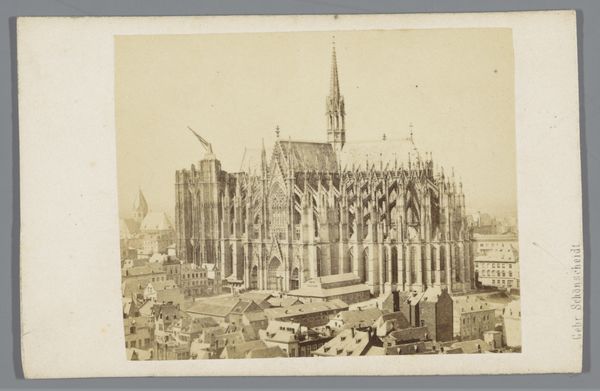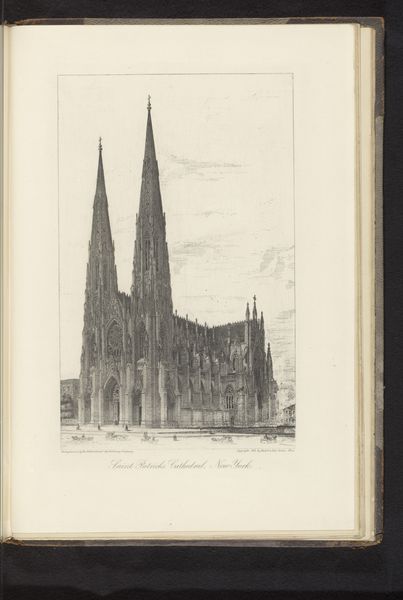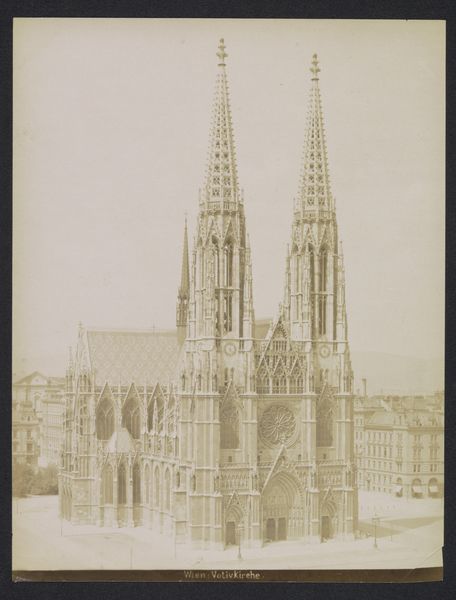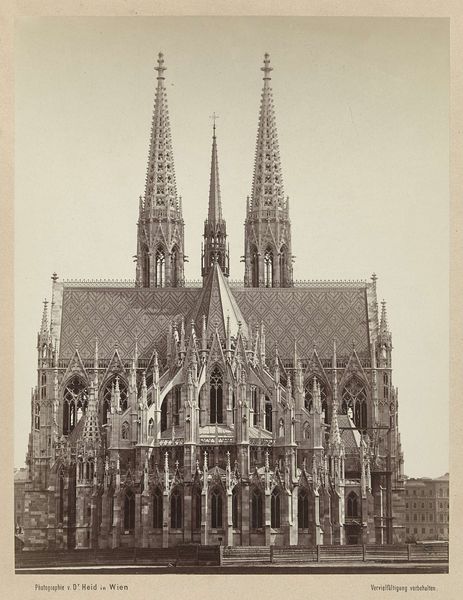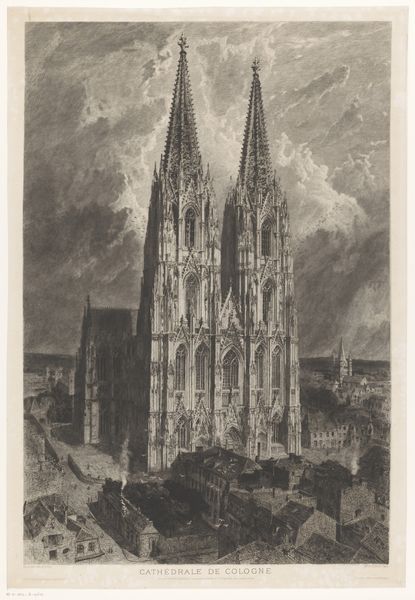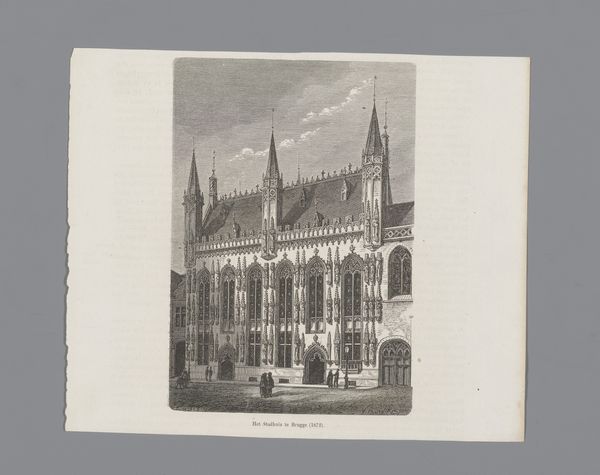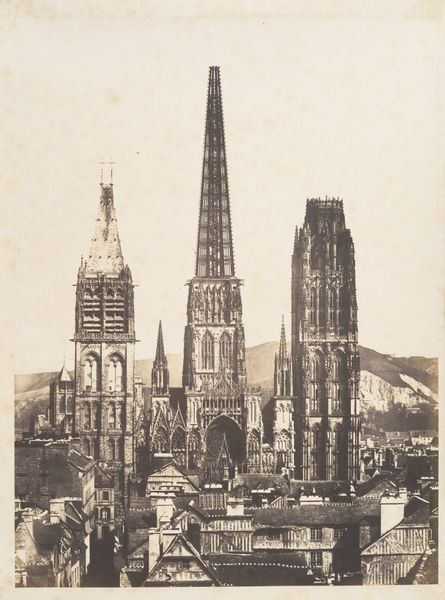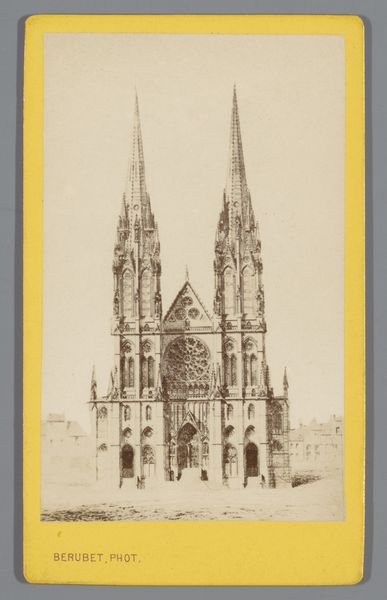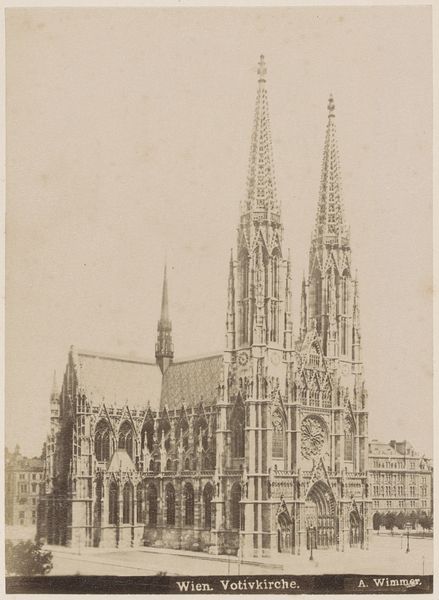
print, photography
# print
#
photography
#
romanesque
#
cityscape
Dimensions: height 64 mm, width 95 mm
Copyright: Rijks Museum: Open Domain
Curator: So here we have a photo reproduction of a print, probably dating from between 1855 and 1885, attributed to the Gebrüder Schönscheidt, depicting the Cologne Cathedral. What are your immediate thoughts on this cityscape, Editor? Editor: It feels like a dream… or perhaps more accurately, a half-remembered dream. Ghostly. The sepia tones lend an otherworldly feel, like looking back through time itself. The detail of the architecture is remarkable, it's overwhelming! It sucks you in! Curator: It really does. Notice how the photograph, acting as a reproduction, sort of layers time. The print itself likely interpreted the cathedral through an artistic lens, and then the photograph captures *that* interpretation. You're dealing with layers of cultural perception, a double remove. It has a quiet yet striking impact, right? Editor: Absolutely. Cathedrals, in general, function as incredible time capsules; buildings of community that were established at the very beginning of urban settlements. In terms of iconography, it towers both physically and spiritually, seeking connection between the terrestrial and divine. This pre-digital, handmade process enhances that feel. Curator: I wonder about the cultural weight that the Cologne Cathedral specifically held at this time. Construction originally began in 1248, was halted in the 15th century, and then restarted in the 1840s. It was intended as a grand statement of German identity and ambition. Editor: Exactly. By visually capturing such architectural detail and placing people at the base, there’s a way that you can comprehend that power—the weight of an idea taking physical form and becoming monumental—while retaining access through relatable, daily existence. Curator: And capturing this at a specific moment in time: the moment it comes into full realization. The architecture is Romanesque, drawing heavily on older artistic symbols to build modern cultural ideas. It's a truly stunning combination of elements. Editor: So true, It's hard not to get lost in the details of those soaring spires. Makes you consider all of our fleeting moments beneath such a solid entity. Curator: I'm definitely taking away a renewed appreciation for the dialogue between artistic representation, historical context, and the layers of time encoded within images. Editor: And for me, the importance of icons: solid architectural marvels can trigger an exploration of our collective past. Very humbling, isn't it?
Comments
No comments
Be the first to comment and join the conversation on the ultimate creative platform.

